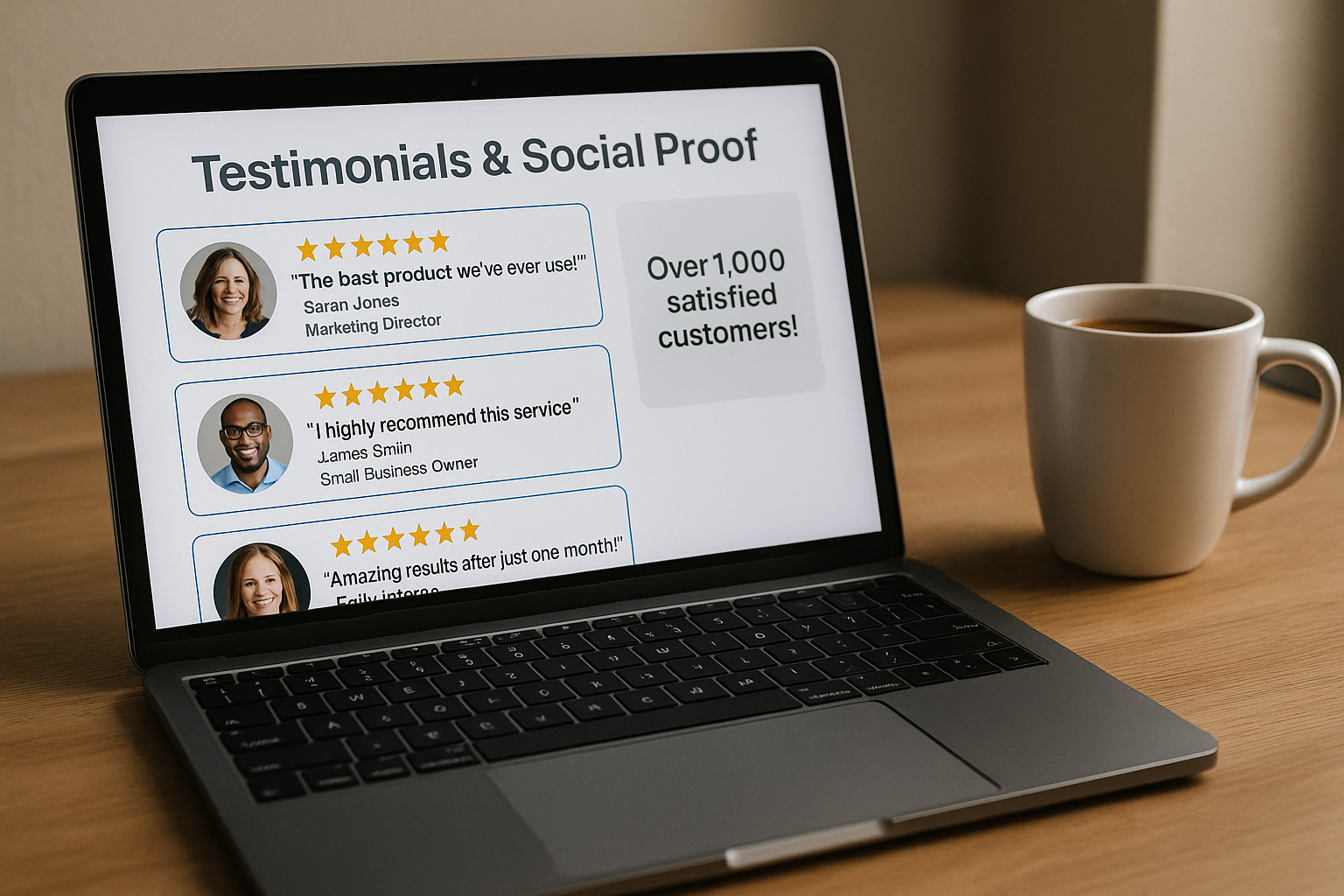You can have the best product or service in the world—but if no one trusts you, they won’t buy.
That’s where testimonials and social proof come in.
When potential customers see that others have benefited from your offer, they’re more likely to believe you can help them too. In fact, studies show that people trust peer reviews as much as personal recommendations.
In this article, you’ll learn exactly how to collect, display, and use testimonials and social proof to build trust and boost sales.
What Is Social Proof?
Social proof is evidence that other people trust, like, or benefit from your business. It helps reduce fear, doubt, and hesitation in new buyers.
Social proof includes:
- Client testimonials
- Star ratings or reviews
- Screenshots of happy messages
- Case studies or results
- Social media shoutouts
- Number of clients or downloads
- “As seen on” media logos
- Influencer collaborations
It helps answer the silent question in every buyer’s mind:
“Can I really trust this?”
Why Testimonials Are So Powerful
Testimonials provide:
- Credibility — Someone else vouches for your work
- Relatability — “That sounds like me” moments
- Proof of results — Shows your offer works in real life
- Confidence — Reduces fear of making the wrong choice
In a world where people are bombarded with ads, honest testimonials feel human and reassuring.
Step 1: Ask for Testimonials (The Right Way)
The best time to ask for a testimonial is:
- Right after a successful delivery
- When a client compliments your work
- At the end of a coaching program or project
Use simple questions like:
- What problem were you facing before working with me?
- What was your experience like?
- What changed as a result of our work together?
- Would you recommend this to others? Why?
You can send these as a form (Google Forms, Typeform) or by email.
Step 2: Turn Testimonials Into Multiple Formats
Use your testimonials in a variety of ways:
- Text quotes for your website or sales page
- Story slides or reels on Instagram
- A highlight section on your LinkedIn profile
- Video snippets on YouTube or TikTok
- Screenshots in carousels or blog posts
Tip: Shorten long testimonials into 1–2 sentence highlights. Use bold or italic text to emphasize key results.
Step 3: Add Social Proof to Your Website or Sales Page
Key spots to place testimonials:
- Near the call-to-action button
- After describing features or benefits
- Below your pricing section
- At the top of your landing page
- In your “About” section
Bonus: Add the client’s photo, name, and job title for extra trust.
Step 4: Share Results and Client Wins (With Permission)
You can also use:
- Before/after stats
- Screenshots of increased followers, revenue, engagement, etc.
- “Client Spotlight” posts
- Repost happy messages or DMs (blur private info if needed)
Example:
“One month after launching her website, Sarah got 3 new client inquiries—completely from organic traffic! 🚀”
Let results speak for you.
Step 5: Use Numbers and Milestones as Social Proof
Even if you don’t have testimonials yet, you can show proof with numbers:
- “Over 1,000 downloads in 2 weeks!”
- “Helping 50+ business owners streamline their content strategy.”
- “Trusted by coaches, designers, and course creators.”
If you’re just starting, use your own transformation as proof:
- “I used this strategy to book 5 clients in 30 days after quitting my job.”
Step 6: Feature Your Social Proof in Content
Work testimonials and social proof into your content rotation:
- “How I helped my client go from ___ to ___”
- “3 Things My Clients Always Thank Me For”
- “This is what people say after using my template”
- “Behind the scenes of a recent project that got this result →”
Tip: Create a “testimonials” or “results” highlight on Instagram.
Step 7: Don’t Fake It
This should go without saying—but never fake testimonials or reviews.
Instead, start small and build real proof:
- Offer beta or discounted spots in exchange for honest feedback
- Ask friends or colleagues to test your service (transparently)
- Document your own journey as your first case study
Honesty always builds stronger trust long-term.
Step 8: Keep Gathering as You Grow
Testimonial gathering should be an ongoing process. Set up systems to make it easy:
- Add a testimonial request in your offboarding process
- Schedule a 5-minute video chat to collect feedback
- Use automation (e.g. email reminder after 30 days)
The more you collect, the more confident your buyers become.
Final Thoughts: Let Others Sell For You
Your testimonials are more than just compliments—they’re one of your strongest sales tools.
Use them often. Share them proudly. Let your happy clients do the talking.
The more social proof you show, the more trust you build—and the more sales you’ll close.
